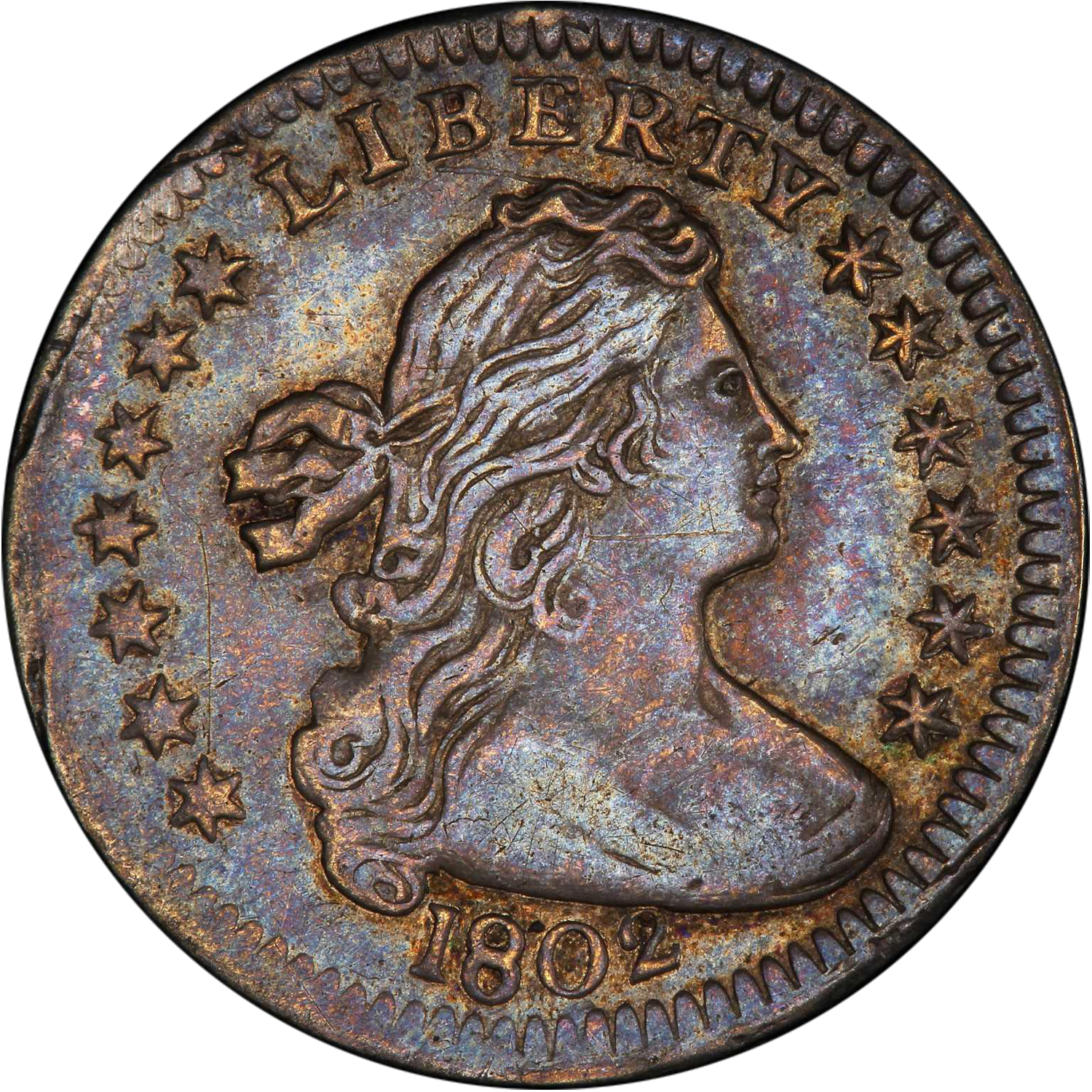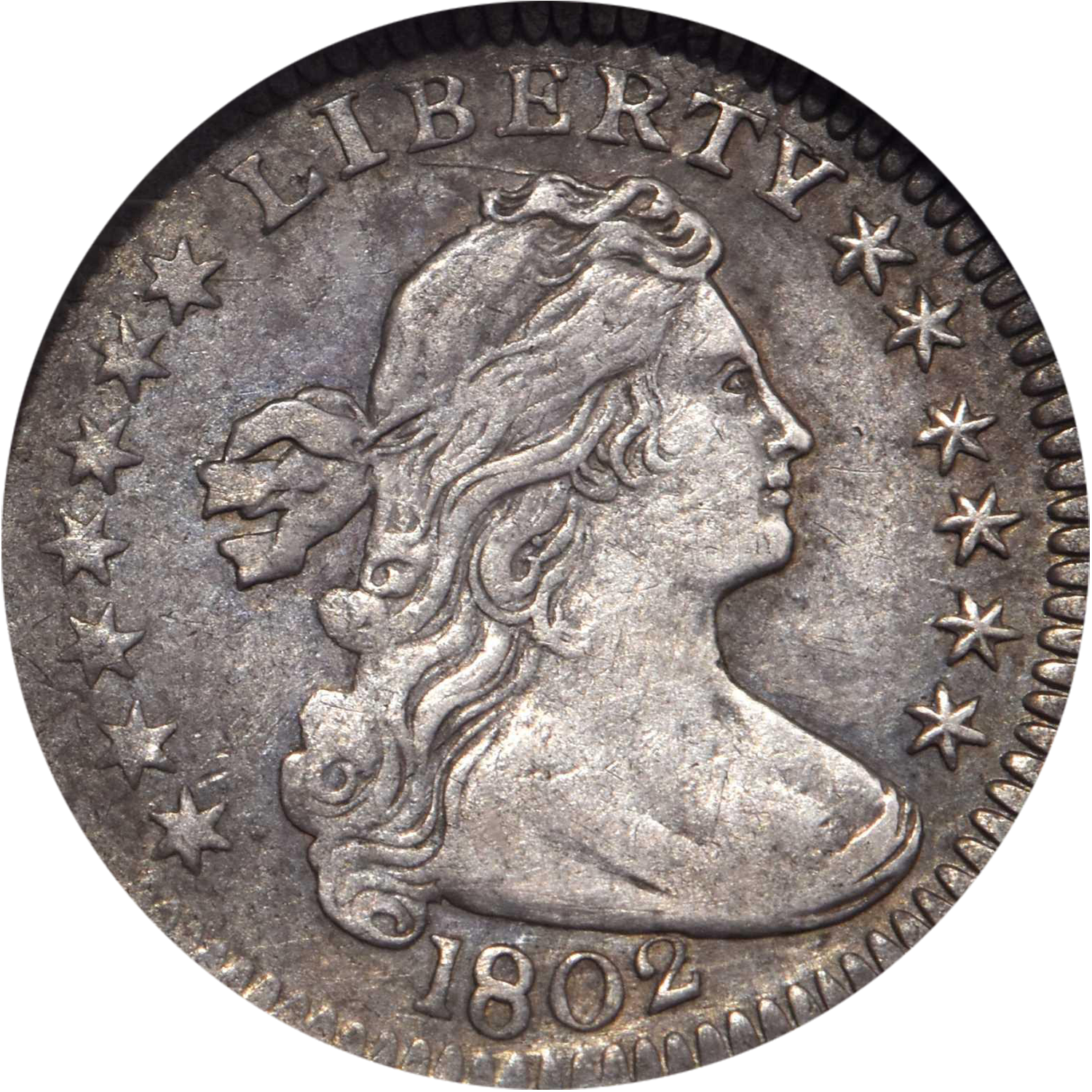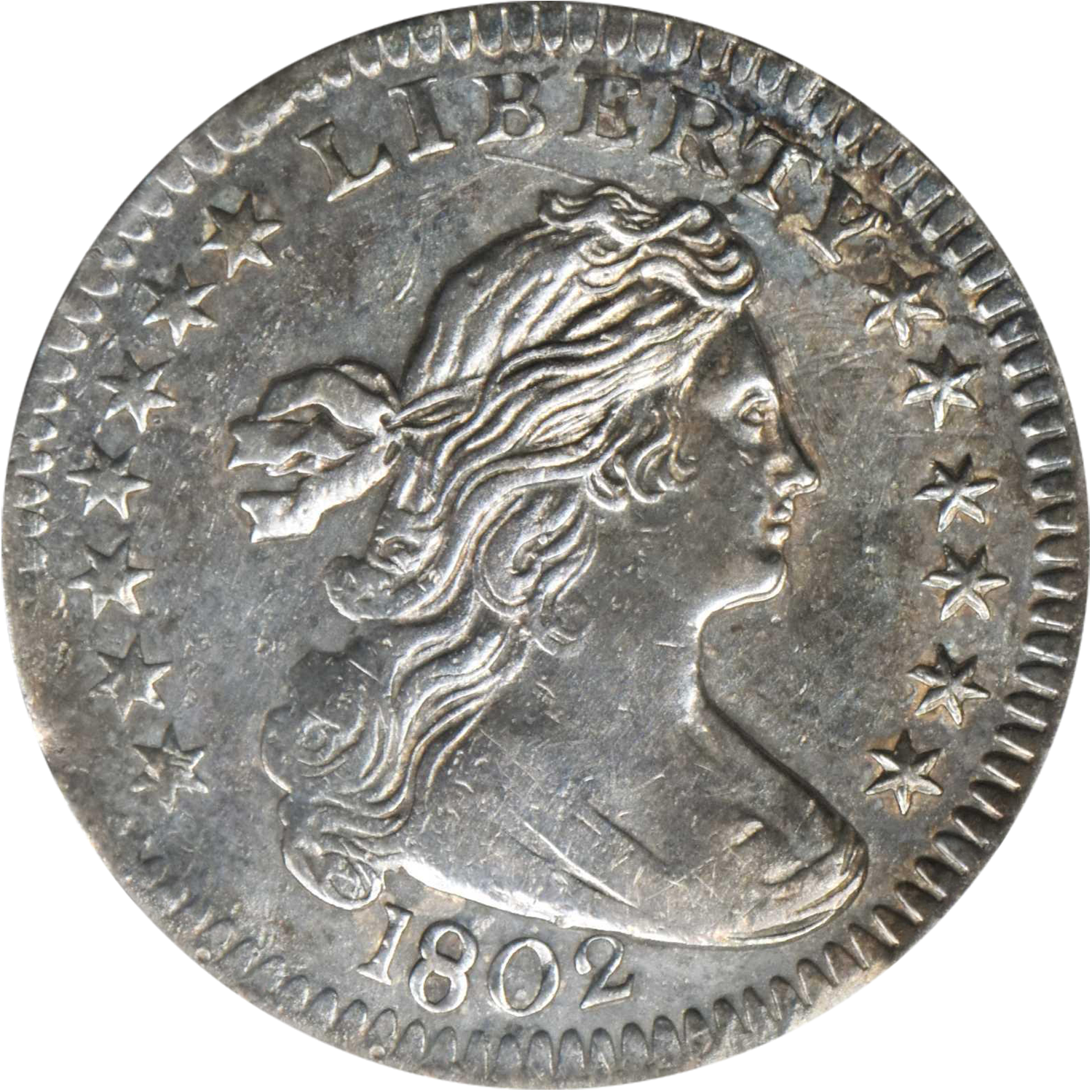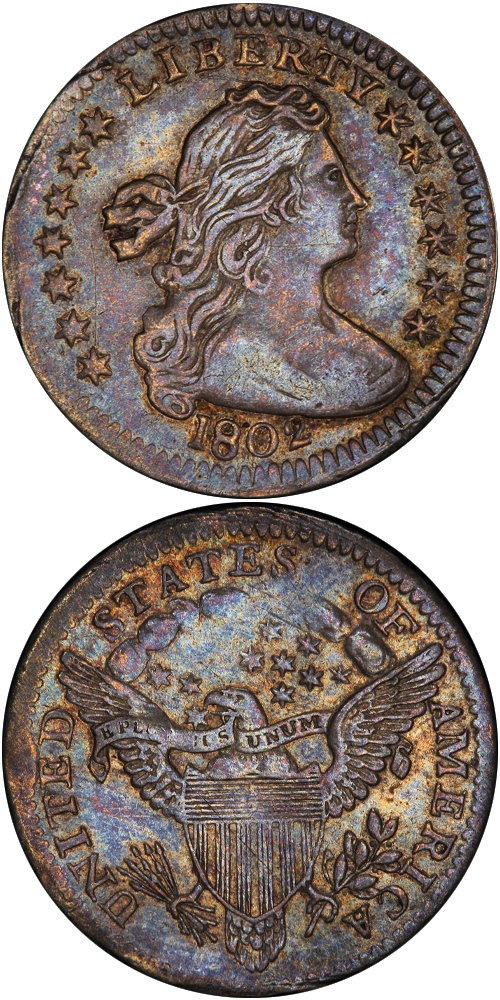1802 Draped Bust Half Dime
“One of the classic rarities of U.S. numismatics.”
— Russell J. Logan and John W. McCloskey
Second only to the 1870-S half dime in desirability for the denomination, the 1802 half dime has captivated numismatists and scholars since the mid to late nineteenth century. The story of this legendary rarity goes back to the earliest days of the United States Mint. The half dime denomination has the distinction of being the first coin struck by the fledgling United States Mint, and while this achievement was heralded by George Washington as "a small beginning," the coin struggled to find an audience in commerce. Over 86,000 half dimes were produced from late 1794 through 1795, but this would be by far the largest mintage for the denomination in all its earliest years. Yellow fever was an ongoing concern in Philadelphia at the end of the eighteenth century and it took a toll on of the quantity of coins struck as well as their quality. Focus was placed on cents and half dollars, and the half dime was relegated somewhat as an ancillary denomination.
After a three-year hiatus, in 1800 the Draped Bust Heraldic Eagle half dime design by Robert Scot was introduced. Modest quantities of the 1800 and 1801 issues were struck in roughly comparable amounts to their bigger cousins, the dimes. Then came 1802. A single pair of dies -- the Logan McCloskey-1 pair -- was used to produce the entire reported mintage of 3,060 half dimes. The obverse die employed a distinctive logotype and placement for the date: the 1 is just free of Liberty's lowest curl, the 8 has a thick center bar and is the largest of the four digits, a very wide 0 that is more oval than it is round, and a small 2 that is tilted upwards toward the right and just about but not quite touches the base of Liberty's drapery. The reverse die was a workhorse that was first used in 1801 to coin the LM-1 and 2 die marriages and then again in 1803 for the LM-1 and LM-2 pairings. Three times as many dimes were recorded as made in 1802 and multiples of half dollars and dollars (no quarters were struck that year). In 1803, the mintage increased twelve-fold to nearly 38,000 half dimes, leaving the 1802 half dime as an anomalous dip in an otherwise steady if not generally impressive production of early half dimes. The Mint experienced some difficulties in striking the denomination throughout its early years. The Spanish colonial half real served much of the commercial needs for a small silver coin, so in 1805 the Mint suspended production of half dimes and would not resume until 24 years later in 1829.
The 1802 half dimes entered circulation unceremoniously and with few -- if any -- numismatists around to appreciate the rarity of the issue, there they stayed. Through normal wear and meltings (especially after the 1853 reduction in weight standards for silver coins), the number of survivors in change dropped. By the late 1850s, American numismatics had started to take root and in December 1859, the first recorded appearance of an 1802 half dime at auction was made in an Edward Cogan sale. In December 1863, the William A. Lilliendahl Collection specimen sold for $340, an astonishing price for a coin during the depths of the Civil War. By 1883, this issue's scarcity was readily recognized, so much so that Harold P. Newlin devoted nearly a third of his landmark monograph on the series, A Classification of the Early Half Dimes of the United States, to the 1802 half dime. Of this issue, Newlin wrote that, "Upon these facts I base my opinion, that the half-dime of 1802 is the most desirable of the silver series." The Newlin monograph served as the primary reference for half dime collectors until Dr. Daniel W. Valentine's 1931 work, The United States Half Dimes, where this issue is listed as V.1. In 1998, Russell J. Logan and John W. McCloskey published Federal Half Dimes 1792-1837, regarded as the definitive work on the subject.
Ever since Newlin's treatise, the 1802 half dime gained considerable fame. Augustus G. Heaton, one-time president of the American Numismatic Association, referenced the coin as "his 'better half' / The Little 1802" in his 1894 poem, "The Convention of the Thirteen Silver Barons." B. Max Mehl thought so highly of the issue that in his 1947 W. W. Neil sale, he not only allocated a full page for the half dime -- something he usually reserved for 1804 dollars -- but he also noted that "the 1802 half-dime has always been considered as one of our very rarest of all U.S. silver coins, nearly in the same category as the 1804 dollar." It was not be until the 1978 discovery of an 1870-S half dime that the 1802 faced any competition as the most celebrated issue of the denomination.
As a type, Draped Bust half dimes are rare, generally weakly struck, and mostly in low grade. This situation is compounded by the overall rarity of the 1802 issue. Numismatists have tried to assemble complete census of these coins ever since Newlin's first attempt in his monograph, where he was able to record 16 auction appearances. Today, estimates vary widely as to how many individual examples remain extant. Walter Breen, in his 1988 Encyclopedia, gave an estimate of between 35 and 45, in part based on an earlier 1935 claim by James G. MacAllister, a coin dealer and cataloger for Wayte Raymond. However, in Logan and McCloskey's 1998 book, researcher David J. Davis concluded that 35 specimens would be an optimistic guess for surviving genuine examples. Indeed, the word "genuine" is crucial here; several previous auction offerings plus a couple of examples in institutional holdings have since been found to have altered dates.
In looking at recent survival estimates, 25 to 30 individual coins would be a reasonable assessment. Even at the high end of that range, the 1802 half dime poses other challenges, especially for numismatists desiring Mint State examples; simply put, there are none. Most are between Fair and VG, with a few mid-grade pieces known. The Condition Census for the issue starts at VF-30 and tops out at AU-55 with the Newlin-Garrett coin, which was submitted twice to PCGS, both times receiving that grade determination. So elusive is the 1802 half dime that an AU-50 specimen was featured in the superlative D. Brent Pogue Collection.
Logan and McCloskey rightly labeled the 1802 half dime "One of the classic rarities of U.S. numismatics." As we wrote in our 2015 sale of the Pogue specimen, "Beyond its status as the key date among all issues of the denomination, the 1802 half dime is a classic, the object of many collectors' quests, and an epic destination unto itself."
The example to the left was sold by Stack's Bowers Galleries in the D. Brent Pogue Part I Auction, where it realized $305,500.
1802 Draped Bust Half Dime Auction Highlights
 PCGS AU-50 Sold for $305,500 View Lot 1013 |  NGC AU-50 Sold for $228,000 View Lot 4048 |  NGC AU-50 Sold for $192,000 View Lot 3045 |






